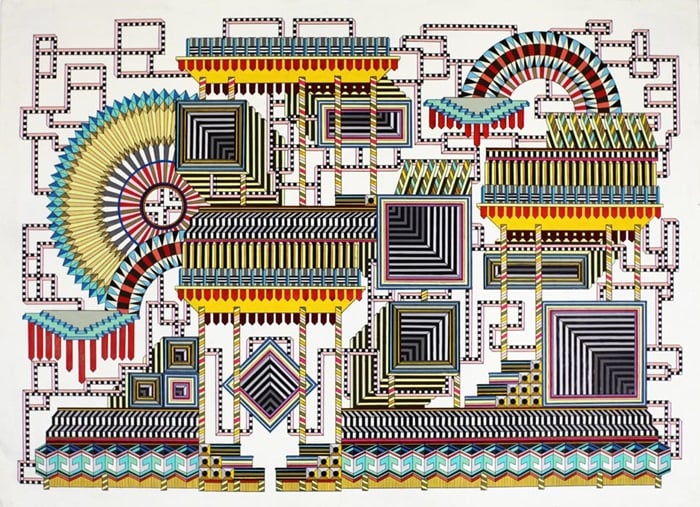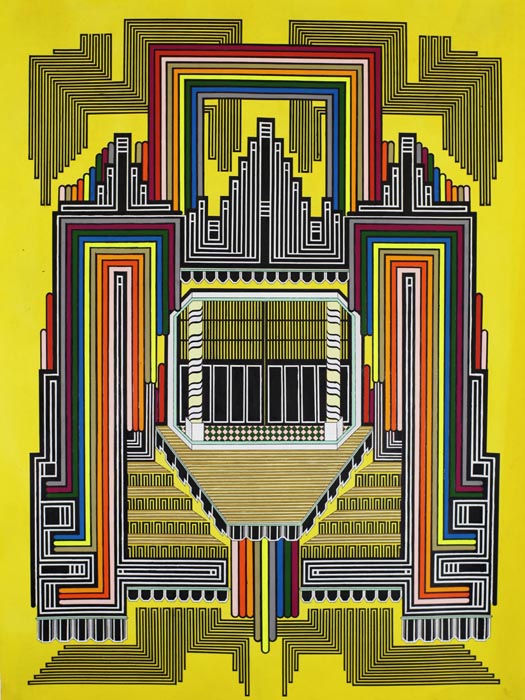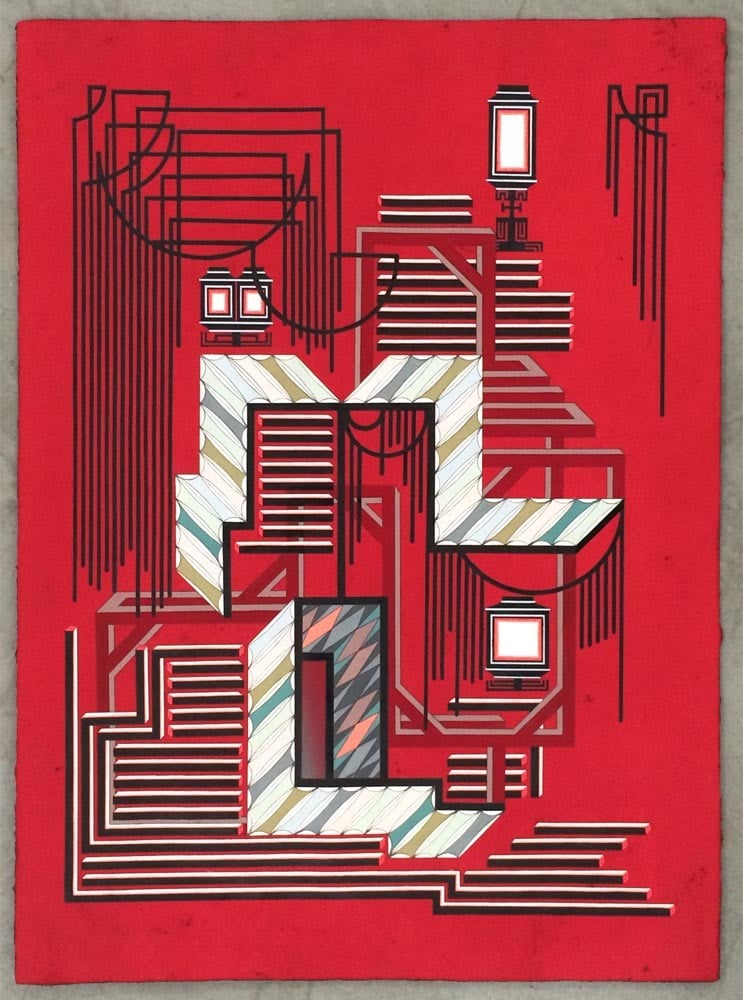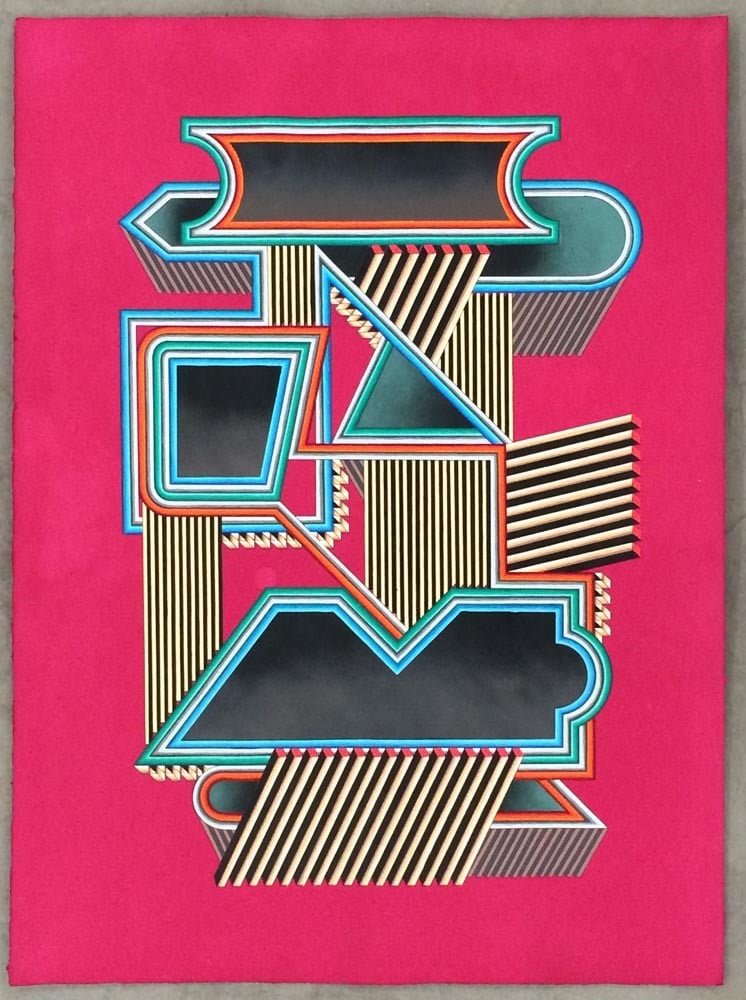People
USC7 Dropout and Transgender Artist Edie Fake’s Mesmerizing Drawings Explore Queer Geometries
The maniacal detail evokes Outsider art.

The maniacal detail evokes Outsider art.

Brian Boucher

An artist who dropped out of a top MFA program in protest is opening a ravishing solo show of maniacally detailed drawings this month in Chicago.
Edie Fake, a transgender artist who left the University of Southern California’s Roski School of Art along with all six of his classmates in protest last month (see The USC Roski Fiasco Points to the Corrosion of Art Education Nationwide), creates visually riveting drawings, some depicting architecture, some pure abstractions.
A new show, “Grey Area,” takes place at Chicago’s Western Exhibitions (June 19–July 18), during LGBT Pride Month. It’s hard to read the title as dealing with anything but a realm free of gender binaries.

Edie Fake, Just a Stage, 2015, ink and gouache on hand-dyed paper.
Courtesy Western Exhibitions, Chicago.
Just as the transgender movement is reaching a new level of visibility with Caitlyn Jenner’s Vanity Fair cover (see Annie Leibovitz Shoots First Portraits of Caitlyn Jenner), ironically, Fake’s work often deals with euphemism and coded language. Titles like Sugar in the Tank and The Friends of Dorothy, two drawings in the upcoming show, refer to old slang terms for homosexuals.
Sugar in the Tank turns such derisive slang into a joyous geometric visual riot, with interlocking shapes in bright hues. While Fake’s work has often been compared to Islamic tilework and quilt patterns, it also recalls the obsessive character of much Outsider art, perhaps an even more apt considering that the LGBTQ population is so often marginalized.
Gender Changer uses a more staid palette to depict a hulking brick building whose symmetry is inspired by male and female duality. In focusing on a façade, it recalls Fake’s 2013 solo “Memory Palaces,” at Chicago’s Thomas Robertello Gallery, in which he showed drawings depicting the façades of historical Chicago gay bars. Even when they’re abstract, the new drawings’ dense patterning evokes colonnades, domes and arches.

Edie Fake, Sue, 2015, ink, enamel and gouache on hand-dyed paper.
Courtesy Western Exhibitions, Chicago.
Fake, born in 1980 just outside of Chicago, got a BFA from the Rhode Island School of Design in 2002, and since then been busy creating zines like the widely beloved Gaylord Phoenix. In a video interview, Fake described an image of the main character in that serial zine stabbing his leg, saying it echoed his own ritual of injecting testosterone into his thigh. He also revved up a vegetable oil-fueled bus for “The FINGERS Tour,” a five-week queer art and performance expedition he co-organized with L.A. artist/musician Lee Relvas in 2009.
Then, a year ago, Fake left Chicago for California. “I’m going to USC for straight-up art,” he told the Los Angeles Review of Books. That chapter in Fake’s life ended last month after a year of what the former students call a “bait and switch,” in which the school retracted various promises (see Entire 2016 MFA Class Drops Out of USC’s Roski School of Art and Design).
The USC7, as they’ve been dubbed, say they plan to stay in the Los Angeles area and undertake projects collectively. If Fake’s ecstatically colorful and emotionally rich drawings are any indication, we’re looking forward to more shows by these brave souls.

Edie Fake, The Retention Pond, 2015, ink, acrylic, enamel and gouache on hand-dyed paper.
Courtesy Western Exhibitions, Chicago.